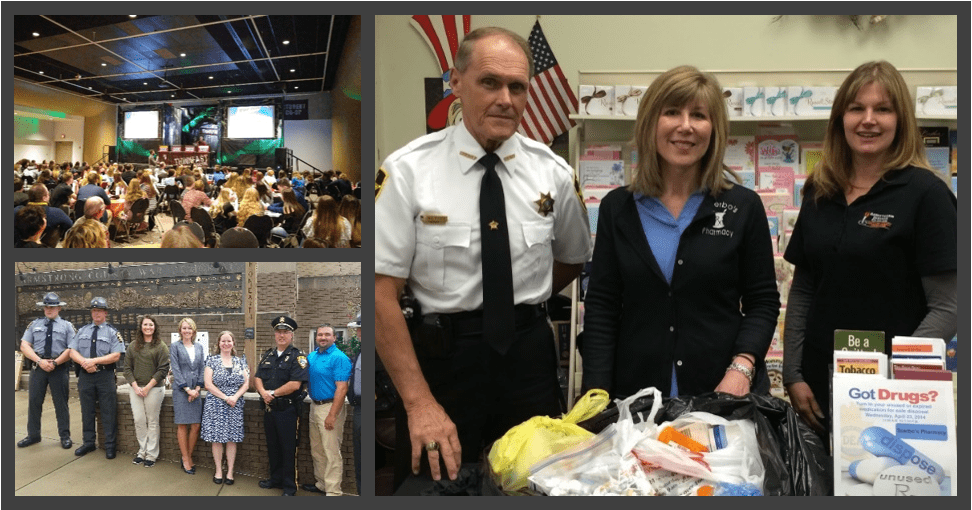
Indiana County reported 53 accidental drug related overdose deaths in 2016 – a 32 percent increase from 2015 and a 307 percent increase from 2014. The Armstrong-Indiana Drug Free Communities Coalition created the Indiana County Overdose Task Force Committee to address the issue within the community and formulate prevention strategies.
The Armstrong-Indiana Drug Free Communities Coalition serves the counties of Armstrong and Indiana. Armstrong County is in the southwestern section of Pennsylvania approximately forty miles northeast of Pittsburgh with approximately 67,851 residents. Indiana County is a rural area located approximately 50 miles east of Pittsburgh with a population of 87,450 people over an 829 square mile area. Indiana County experiences an influx of Indiana University of Pennsylvania (IUP) students each fall. The most recent population statistics indicate enrollment of 12,562 students for 2017. Amish communities are in the northern parts of both counties and farmland and woodlands make up much of the landscape.
“The Indiana County Overdose Task Force Committee has identified the increase of fatal and non-fatal opioid related overdoses as an issue to be addressed based on the magnitude and severity of the problem focusing on adults and the youth that are being affected by their use,” said Carrie Bence, Deputy Director of the coalition. “The Task Force utilizes data provided by the PAYS, Indiana Regional Medical Center (IRMC) emergency department, ambulance calls for drug-related overdoses, county coroner data on drug-related overdose deaths, and single county authority treatment admissions to identify overdoses within the county.”
To address the opioid issue in the community, the coalition implemented Narcan training to all first responders and treatment providers through community-wide trainings. The coalition distributed over 4,000 Narcan kits in recent years. Additionally, the coalition worked with local treatment providers to expand their services to provide all levels of care. The coalition aimed to increase all options for Medicated Assisted Treatment (MAT) and implementation of a Vivitrol program in the local jail, and implemented an on-call/warm line for recovery support services available 24/7 to allow people to receive treatment.
Additional strategies to decrease the supply of both illegal and prescription opioids in Indiana County included increasing the number of permanent prescription drug boxes in the county, collaborating with local pharmacies offering drug deactivation pouches and participating in drug take-back initiatives. In collaboration with the Attorney General’s office and the Drug Enforcement Administration, the coalition worked with law enforcement by providing training and education opportunities to meet the needs, including best practices for investigating an overdose, personal safety practices and advocacy.
Lastly, the coalition worked to reduce the stigma surrounding substance misuse by providing Science of Addiction workshops, first responder ride-alongs, workplace trainings and community workshops. They also implemented a stigma campaign in collaboration with IUP to determine important baseline data.
The coalition obtained great results from their prevention strategies:
• Indiana County had a 25 percent decrease in the number of opioid-related overdose deaths from 2016 to 2017.
• Non-fatal EMS responses to overdoses decreased from an average of 17 per month to two.
• Over 4,308 Narcan kits have been distributed since 2014.
• Since inception of the on-call 24-hour warm line there have been a total of 74 calls, 86 percent of which sought treatment.
When asked what advice she would share with fellow coalitions, Bence stated, “Find champions in your community to help you get buy-in on your initiatives. We found our champions through our county coroner, EMS, police, fire, jails, healthcare, university, pharmacies, faith-based and recovery communities. Start to change the language around addiction.”


